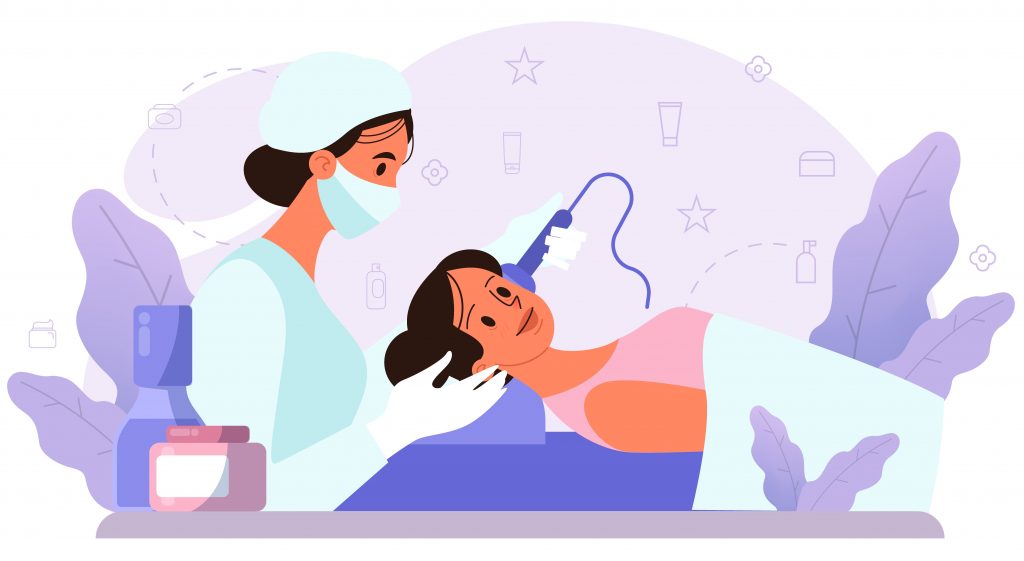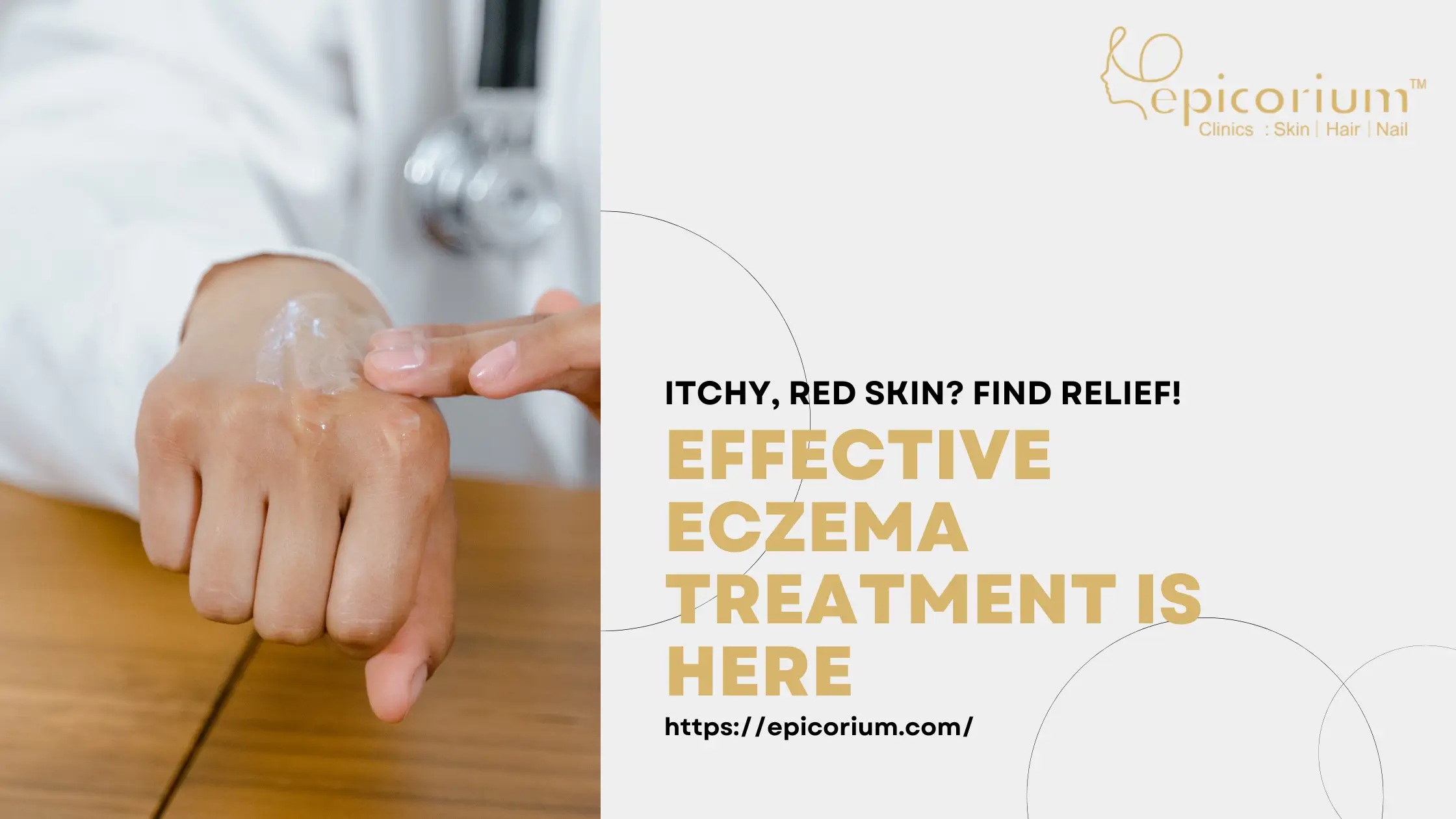
Phototherapy for Skin Conditions
Certain skin conditions can be treated with phototherapy by using light waves. For a set period of time, UV light is applied to the skin. UV light is used in phototherapy as a source of light. UV light is also emitted by the sun. This procedure is called psoralen UVA (PUVA) when it is combined with psoralen.
The UV light in the sun shuts down the immune system cells in the skin. It can be used to treat skin conditions caused by an overreaction of the immune system. Phototherapy is used to treat the following skin conditions:
- Psoriasis – causes red, silvery, scaly patches
- Allergic dermatitis or eczema – an itchy, red skin condition
- Mycosis fungoides – a type of lymphoma confined to the skin
- Vitiligo – a skin disorder where normal skin pigment is lost due to destruction of pigment-producing cells by the immune system

What to Expect with Phototherapy?
Preparing for Treatment
Read MorePhototherapy for Skin Conditions
Certain skin conditions can be treated with phototherapy by using light waves. For a set period of time, UV light is applied to the skin. UV light is used in phototherapy as a source of light. UV light is also emitted by the sun. This procedure is called psoralen UVA (PUVA) when it is combined with psoralen.
The UV light in the sun shuts down the immune system cells in the skin. It can be used to treat skin conditions caused by an overreaction of the immune system. Phototherapy is used to treat the following skin conditions:
- Psoriasis – causes red, silvery, scaly patches
- Allergic dermatitis or eczema – an itchy, red skin condition
- Mycosis fungoides – a type of lymphoma confined to the skin
- Vitiligo – a skin disorder where normal skin pigment is lost due to destruction of pigment-producing cells by the immune system

What to Expect with Phototherapy?
Preparing for Treatment
It will be necessary for you to remove any clothing covering the area that will be treated. Areas that do not require treatment should be covered and protected as much as possible. Safety measures include:
- Protect your neck, lips, and hands from the sun with sunscreen
- UV protection glasses or goggles
- The cover for men’s genitals
- Women should wear sunscreen on their nipples and areolas
- Inform your doctor about any medications you are taking. Side effects can occur with some medications, including over-the-counter medications.
The Phototherapy Procedure
Types of phototherapy include:
- Broadband UVB — Uses UV light, type B. In areas where there are folds in the skin, it cannot be used.
- Narrowband UVB (nbUVB) — Uses a narrower range of UVB wavelengths. The device can reach more specific areas, such as skin folds.
- Psoralen is a medication taken before UVA light treatment called PUVA. Your skin becomes more sensitive to light as a result. The skin can be treated with psoralen or it can be taken as a pill.
- Laser: An excimer laser emits UV light. Specific areas of the skin can be treated with it.
A treatment unit may be used to treat a large area. During treatment, you can stand in this unit. Smaller units can be used to treat smaller areas. Laser treatments use focused laser light to treat a specific area.
What is the Phototherapy Session Length?
It usually takes only a few seconds for the first treatment to be administered. The length of your phototherapy sessions will vary. It depends on your skin type and the strength of the light chosen by your doctor. Most treatments last only a few minutes.
It is generally necessary to undergo several treatments a week. Depending on the type of phototherapy, the length of treatment will vary:
- There are approximately 3-5 treatments per week required for broadband therapy.
- Two to three narrow-band treatments per week are required for narrow-band therapy.
- Treatment with PUVA usually takes about 25 treatments over 2-3 months.
- To clear the skin, laser treatments are usually given twice a week.
Your skin will be treated until it is clear. Occasionally, maintenance treatments are necessary.
Phototherapy Complications
Please consult your doctor if you experience any of the following symptoms after returning home:
- Fever and chills are signs of infection
- Any redness or discharge around the skin lesions
- Burning, pain, or blistering of the skin
- The side effects you experienced as a result of the treatment persist or worsen
- Development of new symptoms
- Don’t hesitate to call for medical help in an emergency
Complications may be caused by the following factors:
- Sunlight allergy
- Nursing or pregnancy
- Conditions that require you to avoid the sun, such as skin cancer or lupus
- Skin cancer history
- Liver disease — phototherapy may increase medication levels in the blood
We at Epicorium offer the best phototherapy treatments for better-looking skin.
Consult our dermatologists today and get to know more about it in detail.
FAQs
Your skin may feel warm, similar to a mild sunburn. If you experience discomfort after treatment, your dermatologist can prescribe medication.
When receiving UV light treatment, it is important to avoid natural sunlight:
When outdoors, wear appropriate clothing and sunscreen. You will be able to avoid overexposure to UV light with the help of these devices.
PUVA treatment increases the risk of sunburn. Due to psoralen's increased sensitivity, this occurs.
You should protect your eyes from sunlight for the next 24 hours. You will be able to avoid cataracts after PUVA treatment if you do this.
Itching may be relieved with antihistamines and other medications.
Regular skin cancer screenings are recommended by your doctor. The sun's UV rays cause skin cancer. The risk of skin cancer can also be increased by long-term PUVA treatment. According to studies, nbUVB phototherapy does not directly cause skin cancer.
It is important to follow the instructions given to you by your doctor.
Your skin may be negatively affected by UV lights in a number of ways, including:
Skin conditions could temporarily worsen
Itchy skin
Red skin due to exposure to the lights
Burning of the skin
PUVA treatment may also cause:
Nausea
Burning skin
Cataracts — lens of eye becomes cloudy, affecting vision
Headache
Fatigue
You may be at risk if you have received a lot of phototherapy treatments:
Symptoms of premature skin aging, such as wrinkles and dryness
Freckles or age spots



